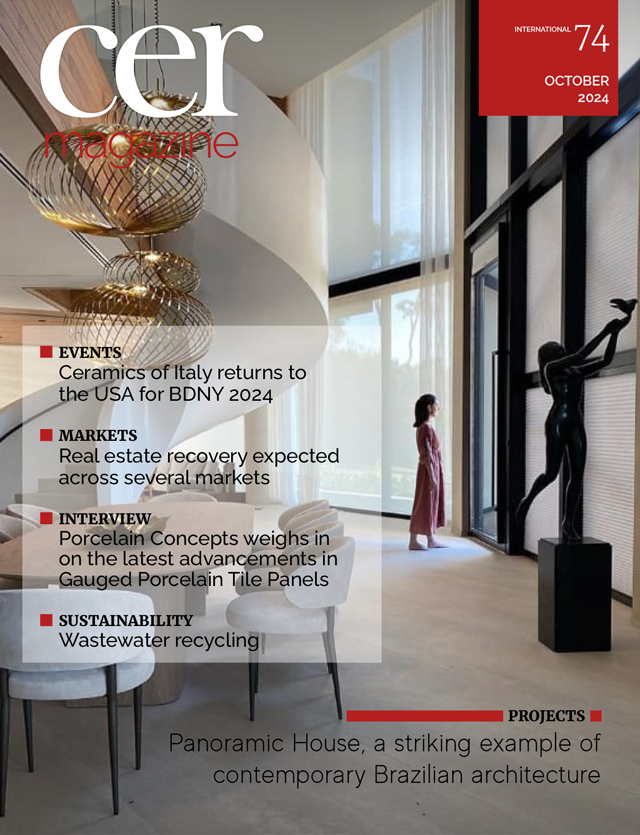Italian ceramics make a major contribution to multifunctionality and urban regeneration
(October 2024) | Adapting existing built spaces to meet the demands of a fluid and flexible society has become one of the most urgent challenges facing all stages of contemporary architecture and interior design projects, from initial conception through to material sourcing. The complexity of this global challenge stems from a combination of cultural, social, economic and environmental factors.
Multifunctional spaces are emerging as a key architectural solution to the growing need for flexibility in residential, professional and urban environments. In areas whose physical dimensions are difficult to modify without considerable cost and disruption, the flexible design approach allows residential spaces to be easily transformed from an office during the day into a comfortable living room in the evening. In professional environments, open-plan areas can be quickly converted from meeting spaces to individual workstations. In urban contexts, public squares and green spaces are now designed to serve both as spontaneous gathering places and as venues for large-scale organised events.
Maximising space and conserving natural resources, particularly through recovery processes that respond to the new circumstances brought about by climate change, is essential in making modern developments fit for the evolving needs of society. Urban development pressures, ageing infrastructure and populations, and the need for new community services require focused interventions on disused areas and buildings through urban regeneration projects. These solutions emerge from integrated planning that balances community needs with sustainable construction practices, aligning ongoing social transformations with enhanced quality of life for all citizens.
Italian ceramic products – whether surface coverings, sanitaryware or bricks – are well positioned to play a central role in this essential, long-term transformation. Their aesthetic versatility, durability and ease of maintenance, ability to mitigate issues such as sick building syndrome, efficient use of natural resources, earthquake resistance and energy efficiency are all factors that make Italian ceramic products indispensable in modern construction projects. In addition, they help to tackle the challenges of multifunctionality and urban regeneration and align with design philosophies and technical solutions that focus primarily on humans and their wellbeing.





